An Interview with Photographer B.A. Van Sise
![]()
B.A. Van Sise is one of the world’s busiest travel photographers and a Nikon travel photography ambassador. A frequent contributor to the Village Voice and Buzzfeed, his work has also been featured on the cover of the New York Times, on PBS NewsHour, the Daily Mail, and on NPR. A number of his photos are in the permanent collection of the National Portrait Gallery of the Smithsonian.
We had a chat with Van Sise about the project.
PetaPixel: Can you tell us how this project got started?
B.A. Van Sise: I’d always been a poetry lover. As a teenager, I used to sneak into my high school early and write poems out by hand on the English classroom blackboards, in about the nerdiest example of vigilante vandalism one can imagine.
I’ve been a photographer, mostly doing newspaper work, for twenty years, but I got sick and had to have some rather invasive surgeries about four years ago. While I was laid up, I got this kernel of an idea: you know, I love poetry, and it could be interesting to find a way to make some expansive project integrating the poets themselves.
I started by making a very short list of fifteen important poets I’d track down, convince to do this with me once I was up and walking around again, and build out concepts for. By the time I got to fifteen, I realized that fifteen felt like nothing, and it was off to the races.
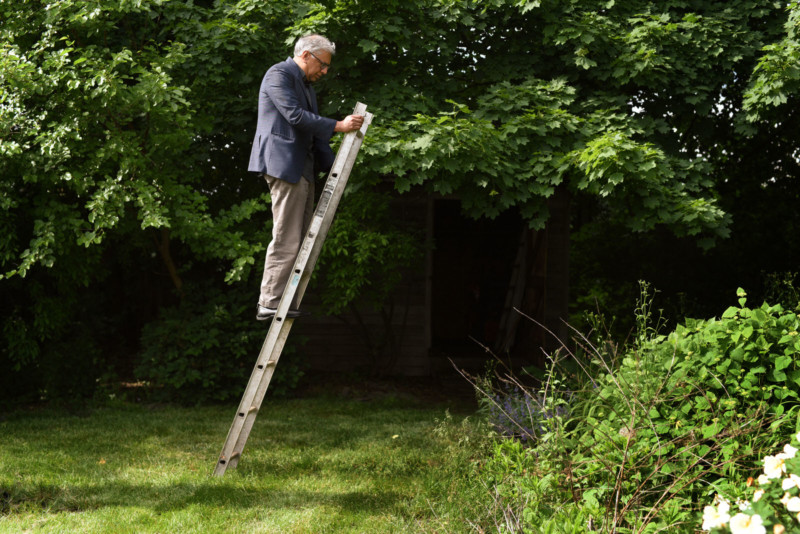
How did you select the subjects?
The initial list was basically anybody who’d been U.S. Poet Laureate, won a Pulitzer, or had been a chancellor of the Academy of American Poets. The project is deeply, and purposefully, inclusive; the list of people who wins awards isn’t exclusively so but has historically tended towards folks who are male and white.
America is, of course, not just that, and the people in this project overwhelmingly reflect that — I worked hard to make sure there were voices of color, LGBT voices, and a lot of other groups that are sometimes marginalized in literature.
But the truth of it is that, with a couple of exceptions, almost everybody in the book comes in as a recommendation. I’d ask my subjects to recommend to me a couple of people they thought I should include, as a safeguard against the tyranny of my own tastes but, most importantly, because it introduced me to people who were not on my, or maybe anybody’s, radar.
There are people in there who’ve won every literary award offered in the world, and people living in dingy apartments in Brooklyn whose names are known to basically just me and their mammas. That’s the way it should be: a rising tide raises all ships, and I’d never do it any other way.
I’ve actually just started on a similar project, of comedians and humorists, that I’m building out in just the same way — it’s a very, very good method for figuring out who belongs — a lot of art cultures are really small, and if people are doing good work, everybody else in that business will hear about it.
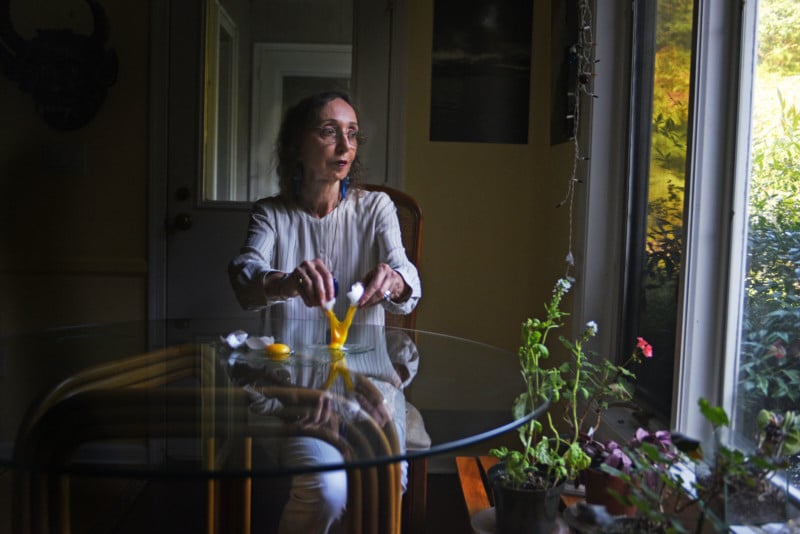
How much time and energy went into the book?
An unspeakable amount. I only stopped because a book and a museum exhibition — at the fantastic Center for Creative Photography, founded by none other than Ansel Adams himself — had to be put together at the tail end of last year. Otherwise, I just might never have stopped.
The project was entirely self-funded, largely through other gigs, and a lot of times it was just me and one or two other people toodling around American in my teeny tiny car, going to meet poets in far-flung corners of the country. In the course of the two years and eight months I spent shooting it, I crisscrossed the nation four times, read more than 500 books, and drove myself into absolute, unspeakable debt.
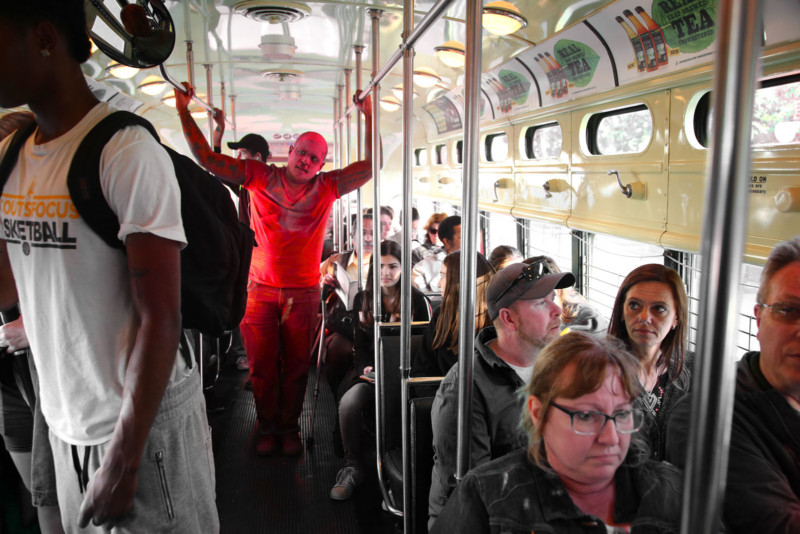
What was the biggest challenge you experienced?
Real answer: Stopping.
Longer, better answer: Making image concepts to match the poems. I’d go to the library, the bookstore, scour the Internet, whatever, and read everything a poet had ever put down in words. 99% of that couldn’t be used — didn’t translate visually, required knowledge of other poems, whatever — and so a lot of times coming up with a poem to build a concept out of it would be challenging. And sometimes I’d come up with the most magical, holy-cow-this-is-it idea, pitch it up to the poet, and the poet would email me back with nope.
I briefly considered including singer-songwriters as poets, and even pinged a couple; pitched Bob Dylan on the single best photo concept I’ve ever dreamed up in. my. life. and I got an email back saying nothing more than “this idea is s**t.”
In reality, the entire project was me inviting myself, unannounced and unrequested, as an ersatz poetry editor in the work and lives of a bunch of people who are artists themselves — there was, naturally, conflict there.
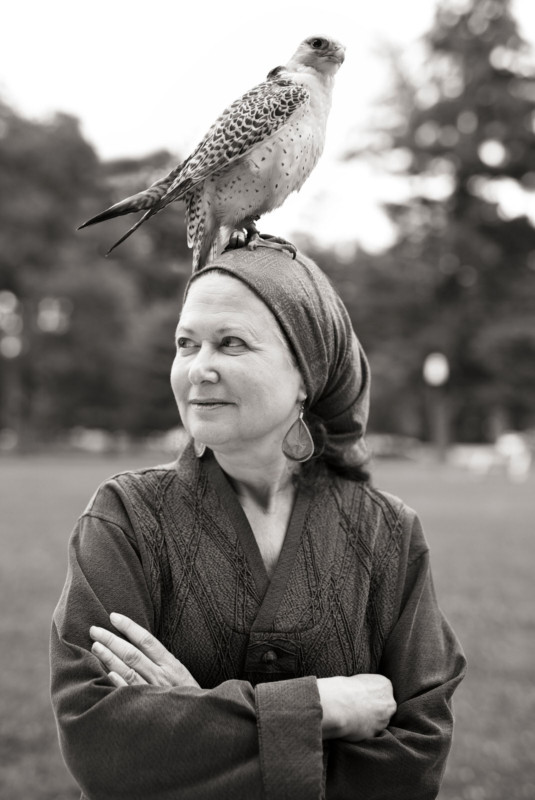
Can you tell us about your process of putting each portrait together? What kind of planning and work did that involve, both leading up to the shoots and during the shoots themselves?
Generally, I’d run a commando raid on the New York Public Library, relieve them of every word they’ve got by my new poet. I’d pick out a few poems — things that I thought were visually appealing, or things that had some relationship to my own life or the lives of people close to me, or something that I just thought might be challenging — and I’d build out a few visual concepts, which I’d then pitch to the poets.
Many were collaborative, though with some I definitely took a heavier hand. Jane Hirshfield, on whose head I perched a falcon, has become a true friend and loves to tease me that I’m bossy; I’m not sure that’s true, but once you’ve talked somebody into putting a trained cinema falcon on their head, how can you possibly cede that magic?
To prove the rule, though, there’s a few — really just two or three out of the nearly 90 — where we did the shoot and the poet came back and suggested something or other than came to mind, some poem they’d written that had stepped out of a shadow while they were doing the shoot or looking at the photograph. In all those cases, their poem became my poem, if that makes sense.
Unlike with the shoots I do for clients, magazines, etc, where everything is by necessity drawn almost by schematic, the planning for poet shoots was varied. There were a few that required a ton of organization — they closed down Thomas Jefferson’s house so I could photograph Rita Dove, for Pete’s sake — but a lot of them were rough concepts where I knew what story I needed to tell and basically what I wanted it to look like, but only came into existence in the moment itself.
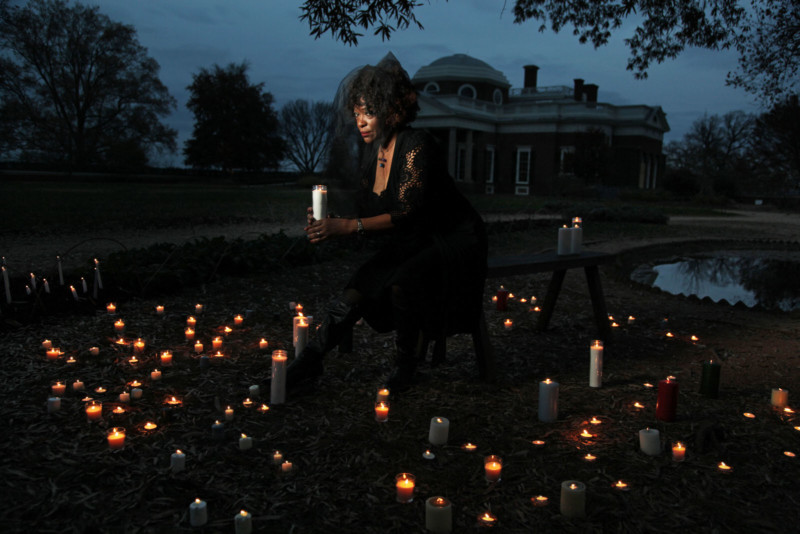
I write a lot — little fiction and nonfiction pieces, published here and there — and that’s how I write, too: in the creation, I don’t usually know where my characters are going any better than they do.
How much time did you spend with each of your subjects?
I’ll deputize Thomas Jefferson again. His grandson, describing him, said that Jefferson was “a miser of his time” — he knew he had little of it, and less still to waste. I’m much the same with my shoots — with this series or any other. Lord knows I’m fascinated by everybody, see value in everybody — which I acknowledge is an Atticus Finch-sized character fault — but the truth is that I’ve never felt a great need to waste several hours of my subjects’ time for something that can be executed in just a few moments, and I’ve never understood the impress-the-boss photoshoots we’ve all seen where there’s one photographer and seventeen assistants, because it needs to look good to somebody in charge.
There were exceptions: when I photographed X.J. Kennedy in the Boston Athenæum, it was a several hour makeup call — but for the most part, it was rare a shoot lasted longer than a half-hour, and were usually quite a bit less. The trade-off is that half the time, the shoot would be done in 20 minutes and the poets are all fascinated by everybody too and we’d all end up going to a dinner or the bar or the library to hang out and kibbitz for a few hours. But that’s a luxury.
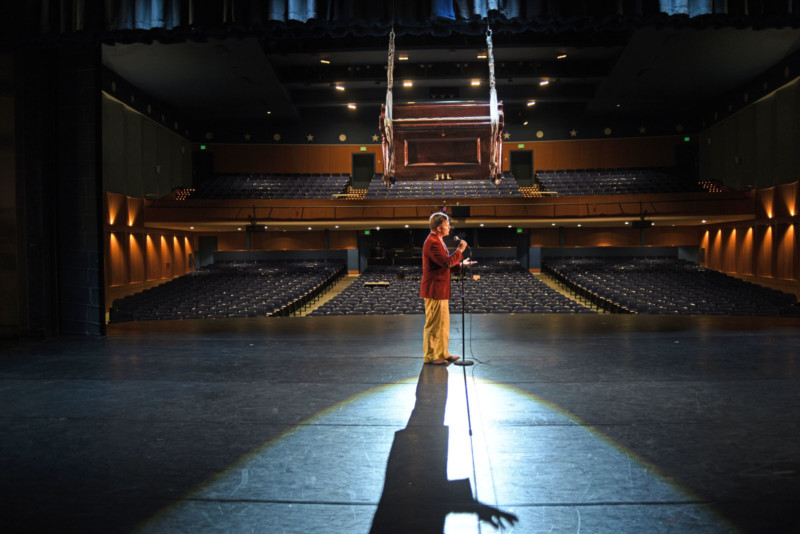
What kind of camera gear and lighting equipment did you use for the portraits?
My digital bodies are all Nikon — the early work in this series was shot with a Nikon D800, and the later work with a Nikon D850. I’ve got enough lenses to make Galileo weak in the knees, but tend to use only a very, very narrow selection in everyday life — a 50mm fixie, and a 24-70 variable. Anything that’s not wide, in my work, is generally made with the fixed lens.
For lighting — I was trained in a newsroom when I was really young by an older photographer named Ken Spencer, who taught me the value of simple lighting, which I’ve always carried around with me. Almost everything in there is done with a single light source (natural light, a strobe pushed through a beauty dish, or my beloved Westcott Icelight) and a bounce.
It’s kinda funny — I’ve got no less than 20 lights — strobes, Kino Flos, big fixed tungsten lamps and practicals, unusual light sources I’ve picked up over the years, all sorts of goofy stuff — in my home studio, and could do huge seven light setups with softboxes and whatnot, but it doesn’t suit the work, at least with this.
I want my portraits to have no ambiguity about where the story is, and the story shouldn’t be “look how clever I am with lighting.” At least not always.
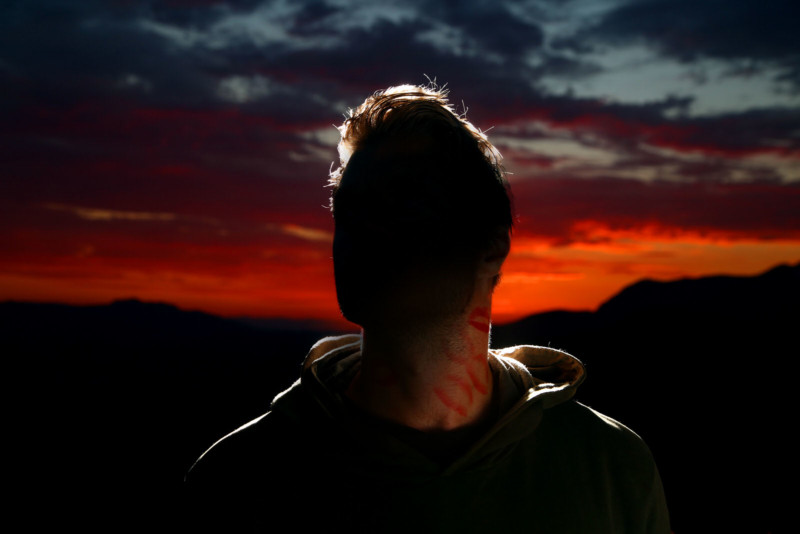
What’s your favorite portrait from the book and why?
As a story: there’s a photograph of slam poetry champion Derrick Brown tumbling down a hill, which is something he really and truly did — we found this absurd little mini-mountain in Los Angeles, with the skyline perfectly framed, and he threw his fourth point of contact down that miserably steep area time and time again. I’d picked his poem — a really obscure one he barely remembered when I pitched him the concept — because it had a certain autobiographical appeal, and Derrick’s portrait is sort of my self-portrait within the series.
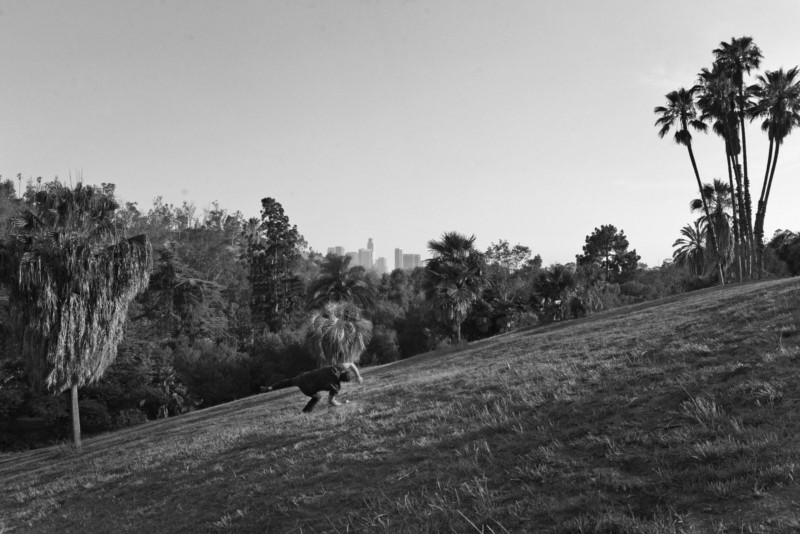
As a photograph: there’s a simple, lovely little photograph of Ted Kooser, U.S. poet laureate in there. Ted lives in Nebraska and told me he’d be happy to sit for me, and that he’d go absolutely anywhere to do it as long as the place I picked was the town he lived in, just to the left of nowhere, in Nebraska. So, to Nebraska I drove.
He was the loveliest man, and we’d selected this poem by him about an abandoned farmhouse and he said “you know, gee, the farmhouse I wrote it about is right up the road…” and we ended up scrapping my idea entirely and going and breaking into the very weathered, slanted farmhouse from his poem.
I’d driven two days up from Oklahoma to photograph him, and had brought along I don’t know how much gear, how many lighting tools, but there was this absolutely perverse orange storm, cold rain and this low, ominous wind rolling through, and when he got into the farmhouse he stepped in, an old man in a broken building, and was just hit by this magical, warm, soft light and I said “that’s it.”
It was like the line from Christopher Marlowe: infinite riches, in a little room. I’d like to pretend that it was inspiration, but in reality the universe just gave that one to me. A gift.
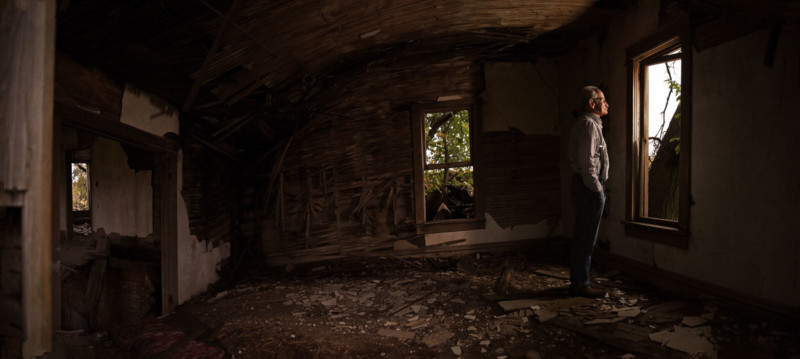
What’s one thing you want people to take away from this work?
Very early on in the project, I had to buy an oodle of books and did so on some website or other. I was buying 40-something books and it was clearly an unusual order; when I clicked to check out, a dialog box came up asking me to enter the displayed code, under a command to me in big black letters: CONFIRM HUMANITY.
The act of buying 40 poetry books had called my humanity into question.
I make work for the same reason I think any artist makes work: because it needs to get out, and because I want people to see it. But I think, on a deeper level, I’d like somebody seeing the work to also engage with it in a different way than most folks engage with what is essentially a photography work — you look at the picture, think on it for a second, and move on. But mine comes with homework!
There’s poetry there, and it’s in conversation with my work, and sometimes in confrontation with my work: sometimes they complement one another, and sometimes my image is there in contrast to the poem, or the poem is there to put me in my place.
I’d like people to leave the book having seen a lot of photographs, having read a lot of poetry, and probably not connecting with some of it but more importantly, being changed, forever, by some poem they saw that’ll stick to them forever, their humanity called into question, I guess.
If you take a cup of milk and put a drop of red dye in it, it will always be, no matter what you do and forever, just a little bit pink. The second you release work into the world it is, by definition, beyond your command- — but that’s what I want it to do, what I hope it might do.
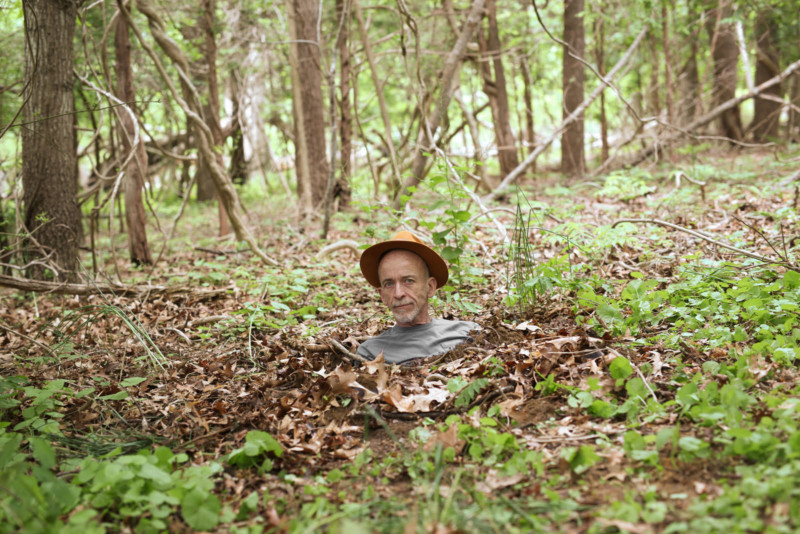
What is one of your favorite photos, and what’s one of your favorite poems?
I don’t write poetry, because I am bad at it and know that. It’s hard to name favorites, but one of my favorites is actually in the book — a lovely piece by Jeffrey McDaniel called The Quiet World.
My favorite photos — boy, that’s hard to identify, too. I interned with Arnold Newman when I was younger, and would probably pick one of his portraits, the simple intelligence of them. The one of Alfried Krupp comes to mind — the geometry, the justified cruelty of it. Overall photographers — well, I love poetry, so America’s greatest poet, Robert Frank comes to mind, too.
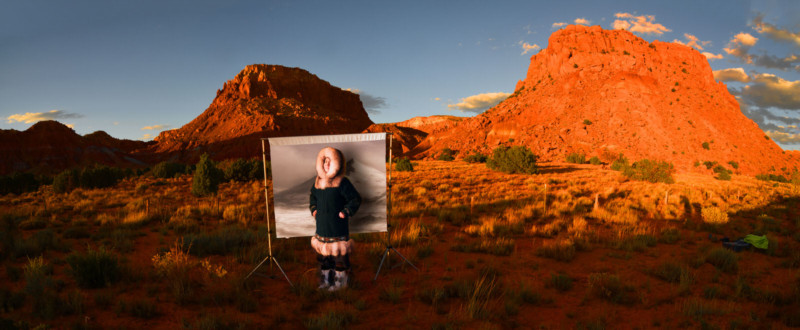
What’s next for you?
I’m never without five projects going on at once — Heinlein, arguing for the competent man, reminded us all that specialization is for insects. The biggest project, however, is sort of a sequel to Children of Grass. a project called (for now) Funny-Looking in which I’m photographing 100 humorists and comedians, in a similar way — very very big names, and also up-and-coming kids you’ve never heard of.
It’s same same, but different: it’s still interdisciplinary, of course, and the foundational subject matter it’s built off is so nonidentical. The culture and motivations of humorists and comedians are wildly different from artists and poets, and the work we’re using is often quite a bit pointier. So I’m basically learning to write all over again, in a whole new language.
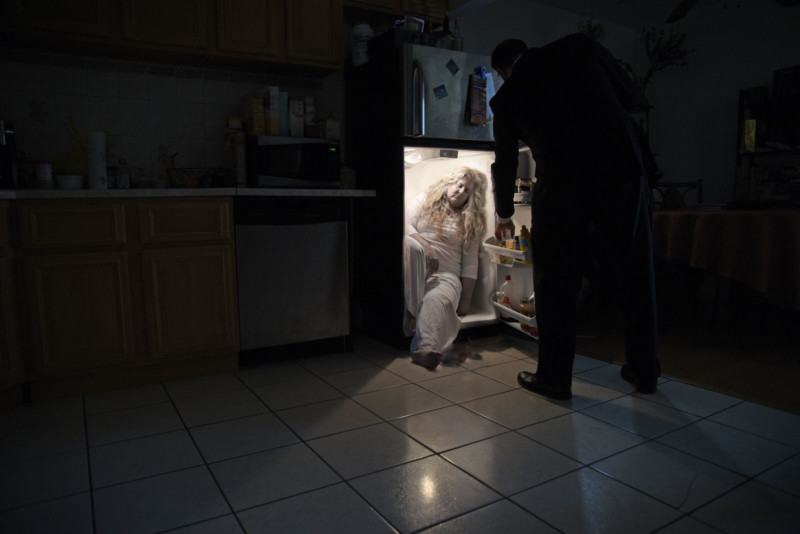
Children Of Grass: A Portrait Of American Poetry is a 176-page hardcover photo book that’s in bookstores now for $34. You can find more of Van Sise’s work on his website, Facebook, and Instagram.
Image credits: Header portrait by Jolene Lupo & Geoffrey Berliner/Penumbra. All other photographs by B.A. Van Sise and used with permission